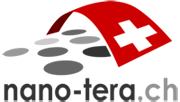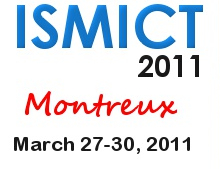Go to
Jos Huisken
 Principal Reseacher/ Program Manager ULP-DSP
Principal Reseacher/ Program Manager ULP-DSP
IMEC-NL, Eindhoven, Netherlands
Challenges in applying Physical Unclonable Functions as a basis for security in Body Area Networked devices
Remote healthcare monitoring and diagnostic equipment holds an important promise for providing healthcare. Especially with a rapidly aging population, it is seen as a crucial technology to reduce costs, while at the same time improving the quality of living, by allowing “at risk” groups such as the elderly or those with chronic diseases to live more independently and moving more healthcare related activities out of the care-facilities into the patient’s home.
Wireless Autonomous Transducer Solutions (WATS) provide the ideal technology for such equipment: it allows sensor nodes, on or in the body for medical applications, to connect wirelessly to a base station (a PDA or mobile phone). Such provided Wireless Body Area Network (WBAN) can monitor readings and – periodically or in case of an emergency – contact medical personnel. The wireless nature of the network and the wide variety of sensors available offer many new practical and innovative applications to improve healthcare.
However, to enable the widespread adoption of WATS technology for medical applications, important security and privacy safeguards must be in place: it is for instance crucial to ensure the security of communication and hence the reliability of the data, to protect the privacy of the user by restricting access to sensitive medical data, and to provide secure mechanisms for nodes to join or leave a network, both for devices maintained by professional caregivers and for privately acquired ones.
The main complication here is the very limited resources of the wireless sensor nodes. These must have minimal energy consumption, as they rely on battery power or energy scavenging techniques. This means memory usage, processing and communication requirements all have to be reduced to the bare minimum. Designing cryptographic protocols for wireless sensor nodes is a very challenging task given these extreme constraints.
A potential basic component to guarantee unique identification, which can be used to enable new cryptographic protocols, is a physical unclonable function. A random access memory can serve this purpose, being part of a more-or-less intelligent sensor node anyway. We will show some results and ask ourselves the question how to apply this unique identification mechanism as a basis for protocols in remote healthcare monitoring.
About the speaker:
Jos Huisken received his masters degree in 1984 from University of Twente after which he joined Philips Research IC-design centre to work on IC's, architectures and design methodologies for digital signal processing applications. This lead to first prototypes of architectural synthesis tools which found their way to several companies.
Jos used these tools, and lead the projects, to create the first VLSI designs for Digital Audio Broadcasting ICs, which were applied in the first commercial DAB receivers. Also he has been active in the field of 3G mobile, from which results ended up in commercial products as well. In 2002 Jos was part of the startup team of Silicon Hive, a company using the basic technology he developed before. In 2008 he left Silicon Hive to join IMEC as a principal researcher to work on ultra low power DSP for wireless sensor nodes, specifically for body area networks, with a strong focus on low-voltage and low-power circuit design.
Secondary navigation
- EPFL Workshop on Logic Synthesis and Emerging Technologies
- Luca Amaru
- Luca Benini
- Giovanni De Micheli
- Srini Devadas
- Antun Domic
- Rolf Drechsler
- Pierre-Emmanuel Gaillardon
- Jie-Hong Roland Jiang
- Akash Kumar
- Shahar Kvatinsky
- Yusuf Leblebici
- Shin-ichi Minato
- Alan Mishchenko
- Vijaykrishnan Narayanan
- Ian O'Connor
- Andre Inacio Reis
- Martin Roetteler
- Julien Ryckaert
- Mathias Soeken
- Christof Teuscher
- Zhiru Zhang
- Symposium on Emerging Trends in Computing
- Layout synthesis: A golden DA topic
- EPFL Workshop on Logic Synthesis & Verification
- Luca Amaru
- Luca Benini
- Robert Brayton
- Maciej Ciesielski
- Valentina Ciriani
- Jovanka Ciric-Vujkovic
- Jason Cong
- Jordi Cortadella
- Giovanni De Micheli
- Antun Domic
- Rolf Drechsler
- Henri Fraisse
- Paolo Ienne
- Viktor Kuncak
- Enrico Macii
- Igor Markov
- Steven M. Nowick
- Tsutomu Sasao
- Alena Simalatsar
- Leon Stok
- Dirk Stroobandt
- Tiziano Villa
- Symposium on Emerging Trends in Electronics
- Raul Camposano
- Anantha Chandrakasan
- Jo De Boeck
- Gerhard Fettweis
- Steve Furber
- Philippe Magarshack
- Takayasu Sakurai
- Alberto Sangiovanni-Vincentelli
- Ken Shepard
- VENUE
- Panel on Circuits in Emerging Nanotechnologies
- Panel on Emerging Methods of Computing
- Panel on The Role of Universities in the Emerging ICT World
- Panel on Design Challenges Ahead
- Panel on Alternative Use of Silicon
- Nano-Bio Technologies for Lab-on-Chip
- Functionality-Enhanced Devices Workshop
- More Moore: Designing Ultra-Complex System-on-Chips
- Design Technologies for a New Era
- Nanotechnology for Health
- Secure Systems Design
- Surface Treatments and Biochip Sensors
- Security/Privacy of IMDs
- Nanosystem Design and Variability
- Past Events Archive
Downloads
Presentation Slides:
SPIMD flyer including workshop schedule (250 KB pdf)
EPFL campus map (2.3 MB pdf)
Registration
Registration is free of charge. Please send an e-mail with subject line "SPIMD workshop registration" to anil.leblebici@epfl.ch to register. Make sure to state your full name and affiliation.


